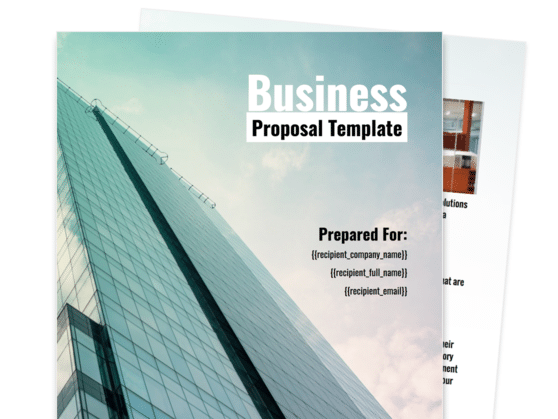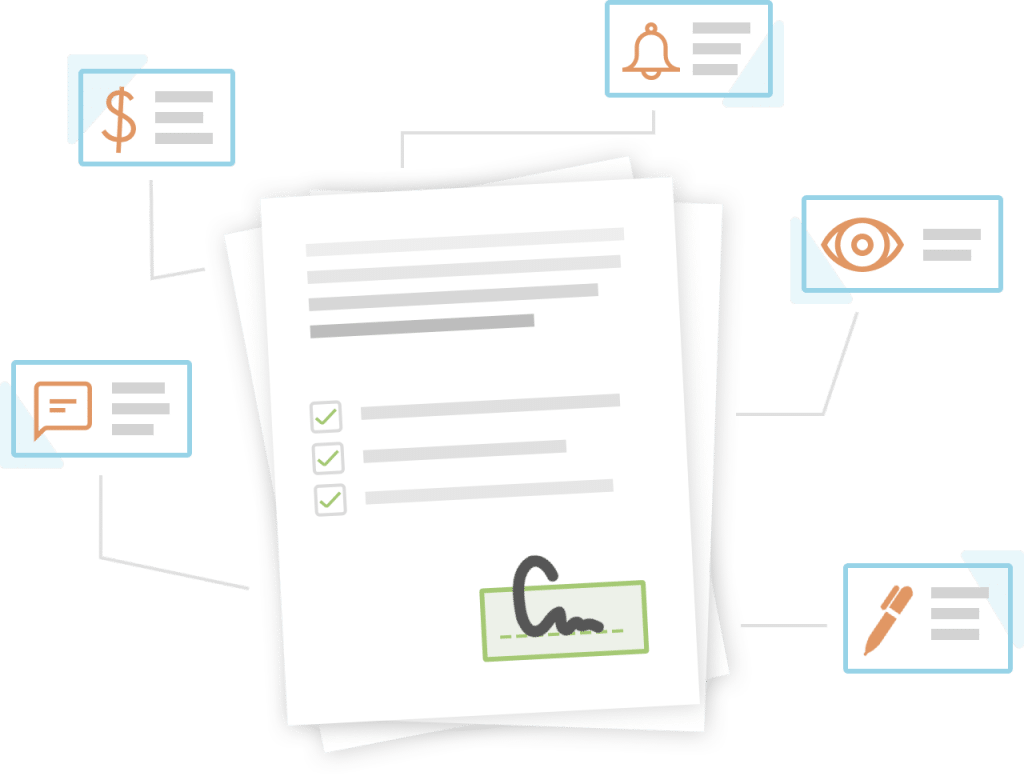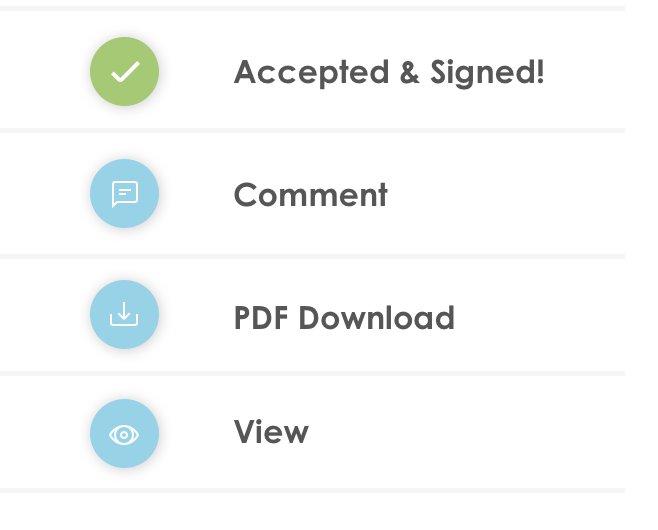You know business proposals are critical for connecting with prospective clients and sharing your value proposition, but they also are not a unique tool. Most organizations have their version of a business proposal they are emailing or submitting physically to clients as often as you are. With that in mind, you need to find creative business proposal ideas that set your proposal apart and position you to easily navigate the following negotiation phase with the prospective client.
What is a business proposal?

First things first, let’s get on the same page as to what our business proposal definition is. We simply see it as a written offer of services or products–often in letter format–tailored to a client that outlines your value proposition and scope of work. The purpose is to document the work you’re negotiating, including tasks, goals, and desired outcomes. As one of the first steps in the sales cycle or B2B pipeline process, the importance of business proposals can’t be overstated.
There are two types of business proposals: solicited and unsolicited. A solicited business proposal often follows an initial phone call, email, or in-person interaction where a potential client expressed interest in your services or product. You also may submit the document when a governmental agency or other organization puts out a Request for Proposals (RFPs).
An unsolicited proposal, as the name implies, is a cold business proposal email to clients presented without their request. Depending on which type of proposal you are sending, you may change certain aspects, but in general, there are standard elements of a business proposal to include in each one you distribute.
Understanding how to make better proposals based on the type you’re creating will help you generate good business proposal ideas that make your document articulate your products and services in a convincing way.
How to write a business proposal letter
One of the rules of thumb when it comes to how to write a business proposal letter is specificity. One of the most common mistakes is writing generically or sending out the same business proposal template and cover letter to every prospect with no customization.
Be specific about the value your solution brings to their problem.
Understand who the reader is, their role, whether they are the final decision maker, their main concerns, their industry background, what resources they already have, and what they are lacking that you can address. Be specific about the value your solution brings to their problem and tailor the business proposal to address their particular needs.
A business proposal is your bid and an important part of your sales strategy, but needs to be more than that. You should not merely state your company’s operation and financial objectives, which is why you have a business plan. In comparison, a business proposal is designed as a response to a specific request or opportunity.
Don’t attempt to write a business proposal without first doing your research. After all, without knowing your client’s problem, or pain point, you can’t offer a suitable solution or incorporate concepts to make a stronger, more enticing proposal that not only says who you are, but explains why this distinction makes you the best choice for that individual prospect. A good question to keep at the forefront of your mind as you develop the business proposal is, how does your solution uniquely resolve their problems? Use the answer as leverage throughout the document.
Parts of a Business Proposal

If you look at a business proposal sample letter, you will discover that the basic business proposal outline includes a title page, table of contents, executive statement, findings discussion or statement of the problem, your proposed solution, qualifications, pricing and methodology, terms and conditions, and a signature page. You may also put together a cover letter for your business proposal PDF, which acts as the introduction to the document itself.
The findings discussion should present information collected from the key stakeholders within the company or someone who can provide insight into the client’s needs, which is another reason research is critical. Remember to be concise and to the point. A business proposal is supposed to be a negotiation-starter, not an exhaustive document. Use callouts to highlight especially important points, along with bullet points and line items to make the content less text-heavy and easier to read and absorb.
Format and presentation matter. While many companies are still using a professional business proposal template for Word or even hiring a designer to develop their document, it’s time to move beyond written business proposals in PDF format or business proposal template free downloads. Instead, it’s time to use proposal management software to make the entire process and the format better and more professional.
Once you’ve put together your document using proposal software, if you absolutely must, you can convert it to a business proposal letter PDF, which will protect the formatting and design, regardless of how the business proposal PDF is viewed by the client. You can find a sample business proposal letter for services online, but while using a business proposal format sample for inspiration is alright, you still need to tweak and personalize the document before sending it to a prospect.
Innovative business proposal ideas
Since the purpose of the business proposal is to turn leads into new clients, keep the forthcoming negotiations in mind. This means a few things:
- The client has a specific price target or goal in mind
- Your proposal will likely be read and reviewed alongside those from competitors
- Compromise is often inevitable
You also can use a fee table to present the client with a few pricing options so they feel empowered to pick one that fits into their budget.
One important business proposal idea to incorporate is including areas where you are willing to compromise or something to give away without hurting your negotiating position. Your proposal can include decoys, nice-to-have items that aren’t crucial for the project’s success, or spare parts that aren’t necessary. These items give the buyer something to remove to reduce the overall cost and reach their price target, without them attacking the substance of the proposal and detracting from the value you receive from their business. You also can use a fee table to present the client with a few pricing options so they feel empowered to pick one that fits into their budget.
Another way to give yourself wiggle room is with the proposed timeline or schedule. If you think a project will take a certain amount of time, you can inflate that number a bit in your business proposal. That not only helps you in negotiating, by letting you make a better offer without putting unrealistic expectations on your own company, but also is a form of protection considering projects often encounter unexpected circumstances that cause delays. Embedding flexibility and contingency into your business proposal sets you up for success and also helps the client properly manage their own expectations.

Finally, use email tracking software or proposal management software that will update you when the recipient received the business proposal letter for partnership. If they haven’t, simply call in the next few days to follow up. Ask if they have any questions about the business proposal letter doc and provide the missing information they still need to say “yes” to moving the proposal down the pipeline.
We hope this post gives you some ideas to consider while preparing your proposals!



